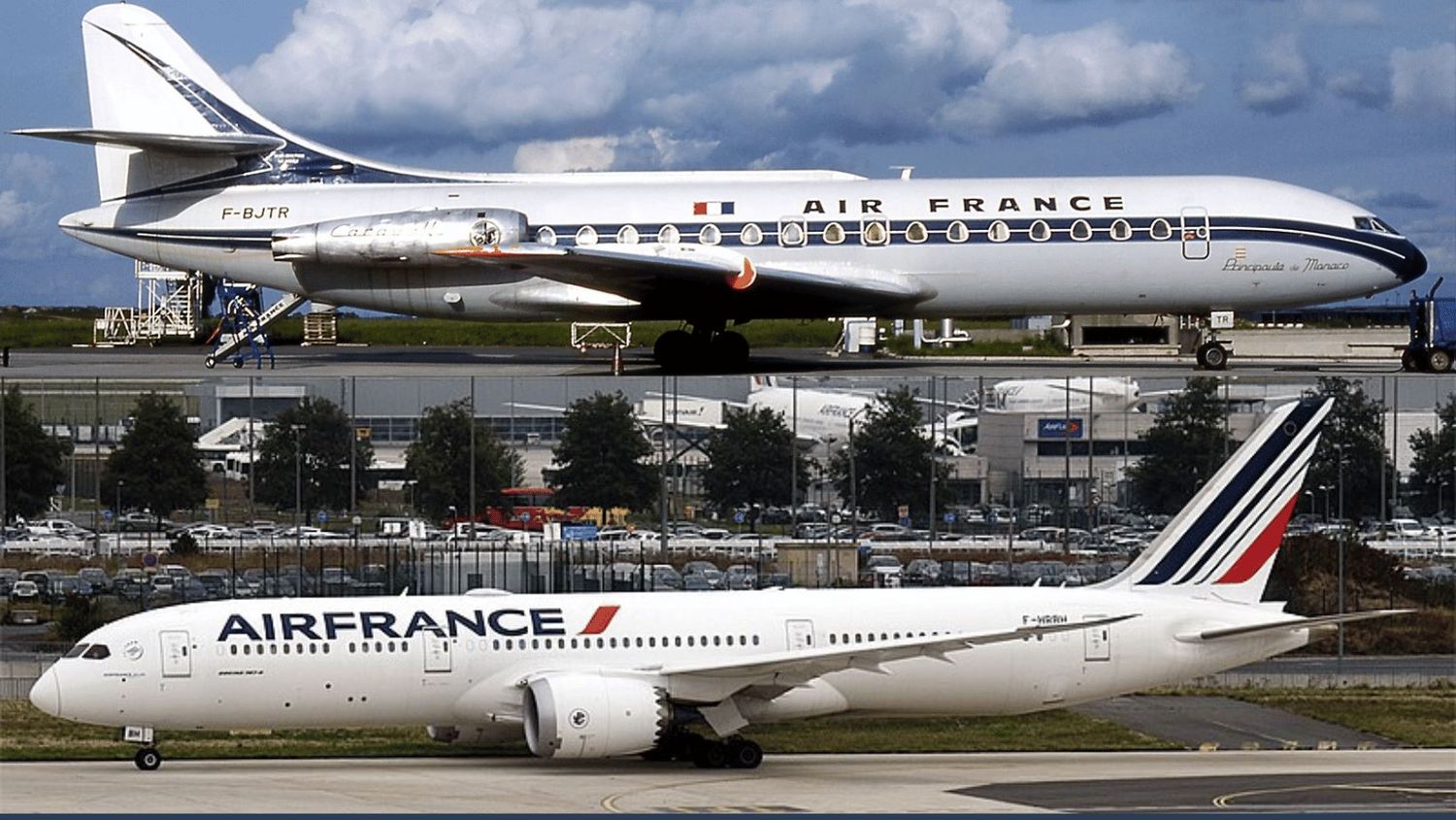Every December 7th, the world commemorates International Civil Aviation Day, proclaimed by the United Nations General Assembly in 1977. In this context, we delve into the fascinating history of Air France, an airline with a rich trajectory of achievements.
Air France: 90 Years of Excellence and Sophistication
Since its founding on October 7, 1933, Air France has forged a history rich in achievements. From the merger with Air Inter in 1997 to the launch of the SkyTeam alliance in 2000, the airline has stood out as an ambassador of France in the air.
With a focus on passenger transport, cargo, and aeronautical maintenance, Air France has flourished thanks to the commitment of its employees and the exceptional service it provides to its passengers.
This year Air France celebrated 90 years of elegance and sophistication. The airline, created from the merger of Air Orient, Air Union, Société Générale de Transports Aériens, Compagnie Internationale de Navigation Aérienne, and Aéropostale, was officially inaugurated on October 7, 1933.
Since then, the company has continued to create its legend by promoting the French art of travel around the world. Today, Air France offers its customers nearly 1,000 daily flights to 200 destinations with a fleet of more than 240 aircraft.
Air France celebrates this pursuit of excellence and the ambition to stay at the forefront of the latest trends by showcasing its unique expertise to the world. Design, as part of the elegance that characterizes the French flag carrier, is also reflected in the changes to its logos, the famous Winged Seahorse.
The Winged Seahorse: A Graphic Legacy
The symbolism of Air France’s logos, especially the iconic winged seahorse, is a visual testimony to the elegance and sophistication that characterize the airline.
Originating from Air Orient, this emblem combines elements of Pegasus and the Annam Dragon, alluding to power and speed. Through the decades, it has left a mark on posters, planes, and dinnerware, serving as a reminder of Air France’s origins and evolution.


Strategic Transformation: 1976 and Beyond
The 1970s marked a significant transformation in aviation, and Air France responded boldly. The decision to strengthen the French identity led to the adoption of the national flag as a key element in the logo design. This evolution reflected the airline’s adaptability to operational changes and the evolving needs of its clientele.

Over the years, the icon of the seahorse varied until it disappeared, allowing the lines and colors of the French flag to take a more prominent role. Air France has maintained the order of the colors, preserving a certain balance but bending verticality to convey the idea of dynamism, a movement underlying an airline.


90 Years of Impact: Air France on the Global Stage
October 7, 2023 marked the 90th anniversary of Air France, celebrated in various places around the world. Since 2004, Air France-KLM Royal Dutch Airlines and Transavia have formed a powerful group leading intercontinental traffic from Europe, leaving a significant footprint in global aviation history.

The story of Air France is not just a narrative of flights and connections; it’s a chronicle of elegance, adaptability, and leadership. On International Civil Aviation Day, we celebrate Air France’s fundamental role in social and economic development, as well as its contributions to safety and efficiency in international air transport.


Comentarios
Para comentar, debés estar registrado
Por favor, iniciá sesión